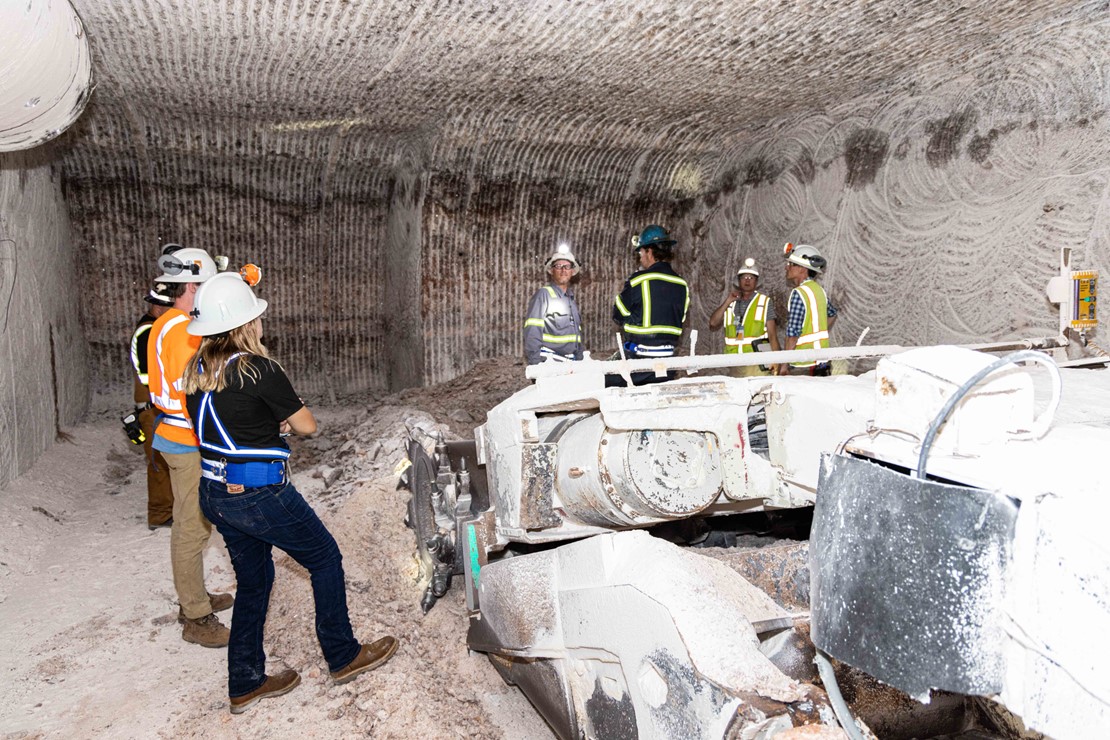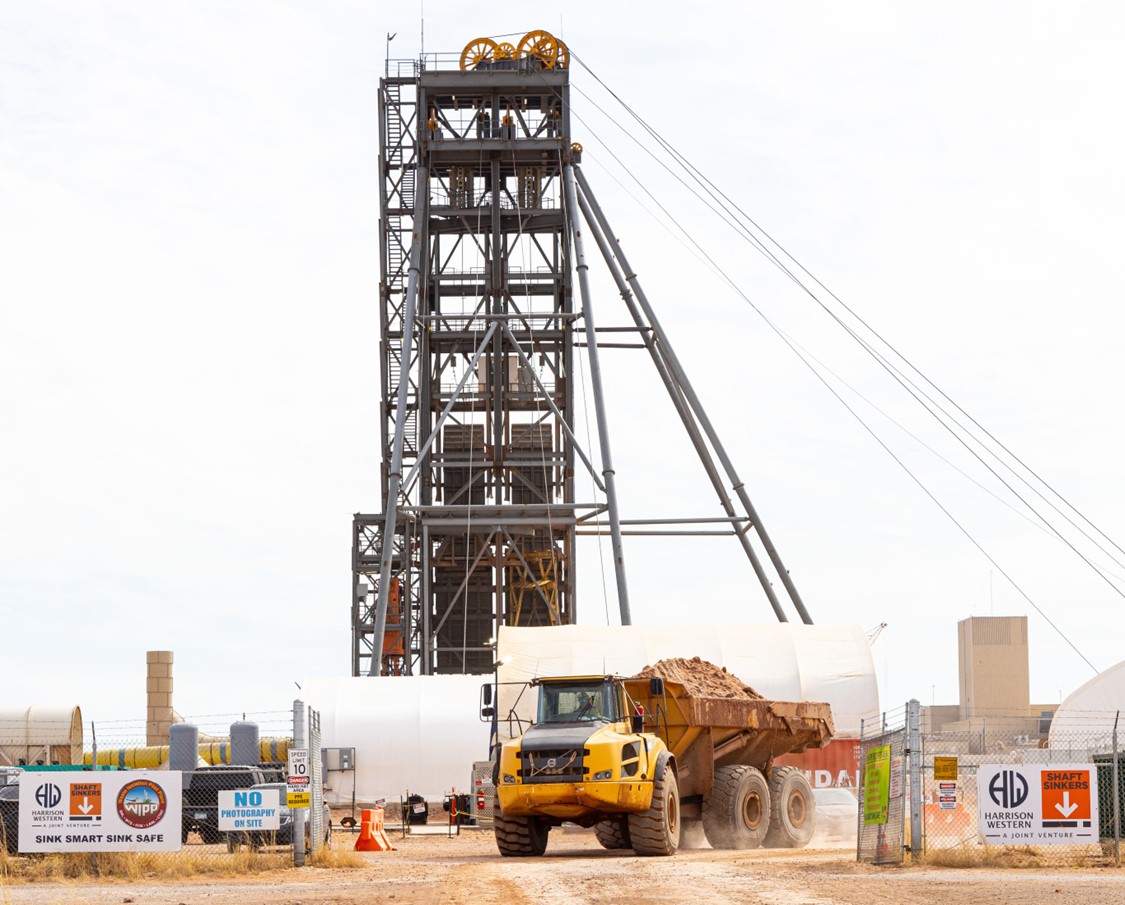
WIPP Community Forum & Open House
September 25, 2023
Terms Agreed to Renew WIPP Operating Permit
June 28, 2023WIPP’s New Air Shaft Reaches Milestone, Connection Work to Underground Repository Begins
CARLSBAD, N.M., July 11, 2023 – The U.S. Department of Energy’s (DOE) Carlsbad Field Office announced today that excavation crews recently attained a milestone in the construction of a new utility shaft at the Waste Isolation Pilot Plant (WIPP).
They’ve reached an underground depth, known as station depth, that allows horizontal tunneling work to begin on connecting the shaft to the WIPP repository complex. The repository sits at 2,150 feet below ground level.
“This is a hugely significant step in increasing airflow in the WIPP underground,” said Mark Bollinger, manager of DOE’s Carlsbad Field Office. “Congratulations to the crews, who have safely and compliantly worked around the clock to make continual progress on an important part of the new WIPP infrastructure.”
The utility shaft, WIPP’s largest at 26 feet in diameter when completed, will provide air to the Safety Significant Confinement Ventilation System (SSCVS), the largest safety-related ventilation system in the DOE complex. That system and the utility shaft are being built by Salado Isolation Mining Contractors (SIMCO), DOE’s management and operations contractor at WIPP.
“This is a tremendous accomplishment for our WIPP workforce,” said Ken Harrawood, SIMCO President and Program manager. “The new utility shaft is a key component of the SSCVS that, when online, will enhance WIPP’s capability to deliver the nation and New Mexico’s cleanup mission.”
The SSCVS will provide increased airflow that allows simultaneous mining, rock bolting, waste emplacement and maintenance operations. Bolting controls the movement of salt rock — known as salt creep — in the WIPP underground.
Reaching the station depth was a culmination of nearly three years of construction and mining work as crews overcame unique challenges. Work on the utility shaft started in late 2019, was paused in late 2020 for one year during the pandemic, and the State of New Mexico authorized a restart in November 2021.
Crews from Harrison Western-Shaft Sinkers Joint Partnership, SIMCO’s shaft subcontractor, work 24 hours a day, seven days a week. They set charges to blast half of the shaft circle at a time, excavating and removing the debris to the surface, before repeating on the other side of the circle.
Work in the shaft is conducted from a Galloway, a five-story tall, multilevel platform. As it descended into the shaft, crews installed concrete liner of varying thickness down to 873 feet, where an ancient salt layer begins. From there to the final planned depth of the shaft bottom at 2,275 feet, crews will install rock bolts and metal mesh to control loose rock.
Located in southeast New Mexico about 26 miles from Carlsbad, WIPP was constructed in the 1980s for disposal of defense-generated transuranic (TRU) waste. The repository is carved out of a 2,000-foot-thick salt bed formed 250 million years ago. TRU waste is disposed of 2,150 feet underground in rooms mined from the salt bed.


